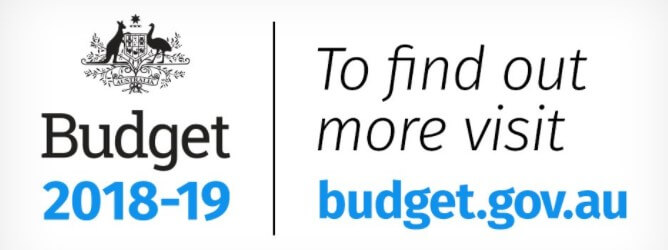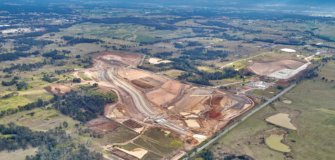Federal Budget – what $1 Trillion gets you
Martin Sinclair Oct 19

The idea of budgeting for a surplus has been well and truly consigned to history as the Government’s budget now focuses on pulling Australia out of the economic mire.
And while national headlines paint a picture of those it has overlooked, its difficult to argue that money is not being thrown at the problem. So its difficult to imagine that it doesn’t ultimately trickle down.
Tax Cuts
More than 11 million taxpayers will get a tax cut, backdated to 1 July. For more than 7 million Australians, the changes mean tax relief of $2,000 or more this year. That will reward hard work and strengthen the economy. It will generate billions of dollars of economic activity and 50,000 new jobs. The upper limit for the 19 per cent tax bracket lifted to $45,000 and the upper limit for the 32.5 per cent tax bracket lifted from $90,000 to $120,000. For more details click here.
Fringe Benefits Tax Exemptions
The Government will provide an exemption from Fringe Benefits Tax (FBT) for employer-provided retraining and reskilling, for employees who are redeployed to a different role in the business. Businesses will be exempt from paying the 47% FBT on retraining provided to employees who have been made redundant, or would soon be made redundant, so they can be given a new role in the business.
JobMaker Hiring Credit
From 7 October 2020, eligible employers will be able to claim $200 a week for each additional eligible employee they hire aged 16 to 29 years old; and $100 a week for each additional eligible employee aged 30 to 35 years old. New jobs created until 6 October 2021 will attract the JobMaker Hiring Credit for up to 12 months from the date the new position is created. To be eligible, the employee must have received the JobSeeker Payment, Youth Allowance (Other), or Parenting Payment for at least one of the previous three months at the time of hiring. Treasury estimates that this will support around 450,000 jobs for young people. For more details click here.
Supporting new apprenticeships
The Government is providing funding for 100,000 new apprenticeships in the 2020-21 Budget to support the next generation of our skilled workers and to help job seekers get back into work. The Government will introduce a new 50 per cent wage subsidy for all businesses that take on new apprentices over the period 5 October 2020 to 30 September 2021. The subsidy will be capped at $7,000 per quarter for gross wages for new apprentices and trainees. This measure is in addition to financial support already provided under the Government’s $2.8 billion Supporting Apprentices and Trainees package for existing apprentices and trainees, which is now expected to support 90,000 employers to keep 180,000 apprentices and trainees in employment and training.
Carry Back Losses
The Government will also allow companies with turnover up to $5 billion to offset losses against previous profits on which tax has been paid, to generate a refund. Loss carry-back will be available to around 1 million companies that employ up to 8.8 million workers. Losses incurred up to 2021‑22 can be carried back against profits made in or after 2018‑19. Eligible companies may elect to receive a tax refund when they lodge their 2020‑21 and 2021‑22 tax returns.
Digital Technology
The COVID-19 pandemic has accelerated the adoption of digital technologies by Australian businesses and consumers which has enabled many to transform their operations and continue to trade through the crisis. The Government’s Digital Business Plan will build on this momentum to support an even greater adoption of new technologies across the economy – by both businesses and consumers. An additional $4.5 billion investment in NBN Co will bring ultra-fast broadband to millions of families and businesses. Funding of $29.2 million will also accelerate the rollout of the 5G network
“It’s promising to see the Government provide funding for innovation and digital infrastructure strategies which will improve efficiencies and facilitate business growth.”

Litsa Christodulou – Business Advisory Partner / HLB Mann Judd
Infrastructure Spending
Rebuilding the economy includes building more roads, rail and bridges. The government’s 10 year infrastructure pipeline is already supporting 100,000 jobs on worksites. A further 40,000 jobs will be supported by $14 billion in new and accelerated projects.
Insolvency Reforms
The Government is making changes to the insolvency framework to better serve Australian small businesses, their creditors and their employees. The changes will introduce new processes suitable for small businesses from 1 January 2021, reducing complexity, time and costs for small businesses. The changes will enable more Australian small businesses to quickly restructure and to survive the economic impact of COVID-19. Where restructure is not possible, businesses will be able to wind up faster, enabling greater returns for creditors and employees. These reforms are the most significant changes to the Australian insolvency framework in almost 30 years. For more details click here.
Supporting Housing Construction
As part of the government’s economic recovery plan to create jobs, rebuild the economy and secure Australia’s future, an additional 10,000 first home buyers will be able to purchase a new home sooner under the extension to the First Home Loan Deposit Scheme. The additional 10,000 places will be provided in 2020-21 to support the purchase of a new home or a newly built home. This will allow first home buyers to secure a loan to build a new home or purchase a newly built dwelling with a deposit of as little as 5 per cent, with the Government guaranteeing up to 15 per cent of a loan.
Improving the Ease of Doing Business
Cutting red tape is a key element of the Government’s Economic Recovery Plan for Australia. That is why the Government is making it easier for businesses to invest, create jobs, respond quickly to challenges and seize opportunities. In this Budget, the Government will:
- Streamline and digitise a wide range of regulatory processes
- Reduce regulation that imposes unnecessary costs and hinders business activity
- Support small business through the recovery
Further details including a full suite of budget documents can be found by clicking here.
“Raising the turnover threshold for a range of tax concessions to $50m, the Government will provide a much-needed boost to business owners.” Said Peter Bembrick, Tax Consulting Partner at HLB Mann Judd.
HLB Mann Judd have published a handy document explaining the taxation implications of the budget measures. To view the document, please click the link below.










